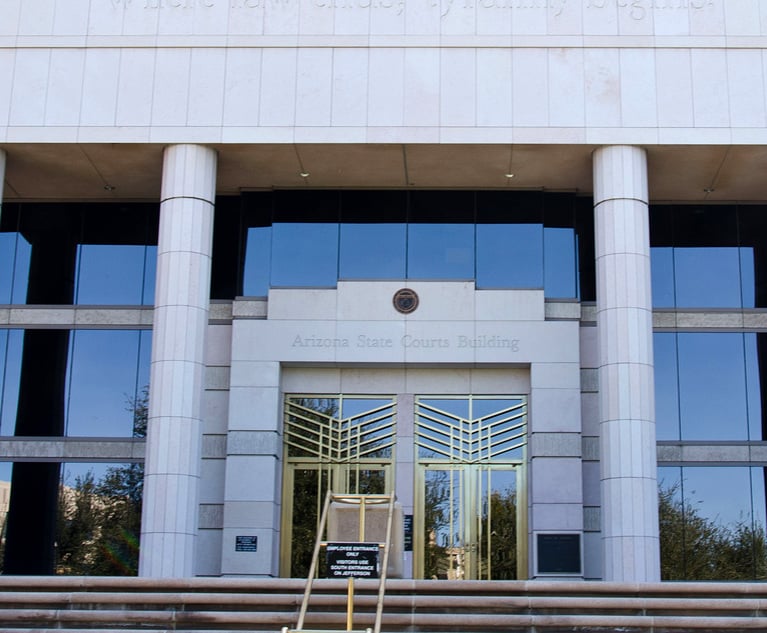Litigation support and e-discovery: Language barrier
Litigation and arbitration cases are increasingly becoming global in nature, and data may come from a variety of countries. There is a mixture of legislative jurisdictions involved as well as a myriad of languages and cultures - including vast differences in the maturity of attitudes towards e-discovery. In an increasingly integrated global community, with cross-border cases ever more frequent, the process of disclosure grows more complex. Documents created in any country and any language can be, and increasingly are, relevant to lawsuits, investigations or regulatory matters. Consequently, legal teams need to be fully aware of how to best equip themselves for the challenge of dealing with multilingual forms of evidence.
May 06, 2009 at 10:12 PM
9 minute read
Business now takes no notice of borders, and this produces evidence written in many languages. Tracey Stretton and Mark Surguy decipher the newest solutions for multilingual cases
 Litigation and arbitration cases are increasingly becoming global in nature, and data may come from a variety of countries. There is a mixture of legislative jurisdictions involved as well as a myriad of languages and cultures – including vast differences in the maturity of attitudes towards e-discovery.
Litigation and arbitration cases are increasingly becoming global in nature, and data may come from a variety of countries. There is a mixture of legislative jurisdictions involved as well as a myriad of languages and cultures – including vast differences in the maturity of attitudes towards e-discovery.
In an increasingly integrated global community, with cross-border cases ever more frequent, the process of disclosure grows more complex. Documents created in any country and any language can be, and increasingly are, relevant to lawsuits, investigations or regulatory matters. Consequently, legal teams need to be fully aware of how to best equip themselves for the challenge of dealing with multilingual forms of evidence.
Global litigation
The complex legal issues involved in international disclosure are illustrated in a case from the eastern district of New York, Strauss v Credit Lyonnais, in which Magistrate Judge Kiyo Matsumoto rejected a more restrictive test for the discovery of foreign documents and compelled a French bank to produce documents to victims of a terrorist attack in Israel. The court took into account factors such as the degree of specificity of the request and the importance of the documents to the litigation, weighed each country's privacy interest in the sought-after documents, each defendant's hardship in complying with plaintiffs' requests and whether the defendant acted in good faith.
Multi-jurisdictional litigation is growing in the global economy, and the complexities in cross-border cases (whether US-led or not) result from the legal variances in different jurisdictions and the logistical challenges around handling vast quantities of multilingual documents. Globalisation means that companies in Europe are not only subject to European Union rules and regulations, but also render themselves exposed to the operation of the long-arm jurisdiction of US agencies under The Foreign Corrupt Practices Act 1977 and the Securities Exchange Act 1934.
There are significant differences in the maturity of attitudes towards e-disclosure in different jurisdictions. While legal frameworks vary and local advice is essential to ensure compliance, the technologies available to support these cases are the same and are driving a convergence in approach in different jurisdictions.
Legal issues
A lawyer involved in a cross-border case needs to understand what rules govern document production (whether it is domestic litigation or some form of international arbitration). The lawyer will have an eye on both the documents that his client is obliged to produce to the other parties and also on the documents and information that the other parties can be compelled to produce to them.
The answer will depend on the 'seat' of the litigation or arbitration. Where it is a US-based case, it is widely considered that the disclosure obligations are, for the most part, wider. For example, the US Federal Court generally treats documents held by a US subsidiary as under the control of the US parent and therefore discoverable. In the globalised economy, both European and non-European subsidiaries of a US parent are likely to be required to produce documents for the US litigation. In contrast, following the decision in Lonhro v Shell Petroleum it will be less likely that documents in custody of an overseas subsidiary or parent will have to be produced in UK-based litigation.
If grappling with large volumes of electronically stored information (ESI) and understanding technology jargon and processes were not enough for the litigator, issues of data privacy (not to be confused with data security) are arising. Most litigators are not data protection practitioners and will need to seek specialist advice. While data protection issues may inhibit the collection of data in the first place, they may well also inhibit the transfer of the data from its country of location to the legal review team, especially if members of the review team are located outside the European Economic Area. It may be safer to move the people to the data rather than to move the data to the people.
This issue has particular relevance for Europe where EC Council Directive 95/46 (Data Protection Directive) has been implemented in the 27 member states, often with different emphases and nuances. An understanding of local law is essential to understand the obstacles there may be to overcome.
While the European data protection regime only extends to 'personal data', it is difficult in practice to readily and adequately distinguish between personal and non-personal data so as to separate the one from the other. The recent case of Re Madoff Securities International is welcome in that it confirms the availability and application of the various exempting provisions under the UK Data Protection Act 1998 in the litigation context – at least in fraud investigations. In this case, the court permitted the transfer of data to the US from the UK even though it is well known that outside the safe harbour scheme the restrictions on data privacy are more lax in the US than in Europe.
Processing data in multiple languages
Knowledge of local privacy customs and language is essential to help overcome barriers to disclosure of ESI, especially at the data collection stage. Reliance is placed on local legal experts to navigate the complexities of data protection and privacy law in Europe. It also makes a lot of sense to draw on the expertise and experience of local e-disclosure experts familiar with the data handling requirement in different countries. The lawyers and consultants must be capable of working effectively together. Data collection in the presence of authorities and/or employees may be required in some jurisdictions and completing documentation for compliance purposes is important.
Collection and filtering of multi-language data
Collected data must be filtered to reduce the volume that is endemic in the electronic world and processed into a uniform and reviewable form. Records held by an organisation in various languages affects the keyword filtering strategy, and this needs to be taken into account. Careful project management involving the technology consultants, lawyers and other experts is essential.
The filtering and processing of multilingual data is a complex task. The data processing engine needs to recognise letters, numerals, symbols in the data and reliably filter and search that data. Many languages, such as English, use white (i.e. blank) space to determine the beginning and ending of words, however this is not standard across all languages. For example, eastern Asian languages like Chinese, Japanese and Korean do not have spaces between words. Therefore, an effective processing system must know how to 'tokenise', or properly parse the text into words and sentences for searching purposes, by correctly interpreting spaces between the characters thereby determining language tokens for search purposes.
Reviewing multilingual data
International legal teams need to consider whether and when to translate multilingual documents for review. They can either review documents in the language in which they were drafted using lawyers fluent in that language or translate the documents into the reviewer's native tongue. A hybrid option may also be chosen, combining a native speaking review and a translated review on various data subsets. Translation may be performed by people (human translation) or computers (machine translation), and the decision to use one method over the other involves balancing accuracy and cost.
There are cases where a review by local teams is required in order to comply with local laws such as privacy laws and to ensure that issues such as privilege and scope of disclosure have been adequately addressed.
Review methodology
Cross-border legal actions frequently involve physically dispersed legal teams that require simultaneous access to case documents. The review process, therefore, needs to be well-structured and tightly controlled.
Online databases accessed via the internet are ideal in cross-border disputes because they are quick and easy to deploy. Documents are loaded into a single database and each legal team is given access to only those documents which they need and are entitled to see. The advanced functionality available in some of these systems significantly increases the rate at which documents can be reviewed. This makes a big difference to the overall cost of disclosure.
It is one thing to have the technology at your fingertips; it is an entirely different thing to know how to deploy the tools effectively, defensibly and to maximum effect so that initiative can be maintained in a case. If done properly the end result is efficiency and accuracy, which translates into cost-savings and strategic advantage.
As lawyers and litigation support professionals at multinational law firms will testify, multilingual disclosure can be difficult to manage. In an increasingly global world, cross-border cases rapidly increase in number as international relationships become the norm.
It is vital that legal teams are at least familiar with the processes of multilingual e-disclosure and with the stages of collection, review and production that follow. While the technicalities involved in those processes may be relatively complex, partnership with an experienced e-disclosure service provider will inevitably smooth the way, reducing time and cost and ultimately imparting a critical legal advantage.
Best practices are evolving and, out of common practice, a standard process for handling evidence across all jurisdictions is emerging.
It is not beyond the realm of possibility that more uniform laws will develop to support these processes, and it is understood that the European Commission is interested in further exploring this area.
Tracey Stretton is a legal consultant at Kroll Ontrack and Mark Surguy a senior associate at Pinsent Masons.
This content has been archived. It is available through our partners, LexisNexis® and Bloomberg Law.
To view this content, please continue to their sites.
Not a Lexis Subscriber?
Subscribe Now
Not a Bloomberg Law Subscriber?
Subscribe Now
NOT FOR REPRINT
© 2025 ALM Global, LLC, All Rights Reserved. Request academic re-use from www.copyright.com. All other uses, submit a request to [email protected]. For more information visit Asset & Logo Licensing.
You Might Like
View All

Some Elite Law Firms Are Growing Equity Partner Ranks Faster Than Others
4 minute read
KPMG's Bid To Practice Law in US On Hold As Arizona Court Exercises Caution
Trending Stories
- 1Public Notices/Calendars
- 2Wednesday Newspaper
- 3Decision of the Day: Qui Tam Relators Do Not Plausibly Claim Firm Avoided Tax Obligations Through Visa Applications, Circuit Finds
- 4Judicial Ethics Opinion 24-116
- 5Big Law Firms Sheppard Mullin, Morgan Lewis and Baker Botts Add Partners in Houston
Who Got The Work
J. Brugh Lower of Gibbons has entered an appearance for industrial equipment supplier Devco Corporation in a pending trademark infringement lawsuit. The suit, accusing the defendant of selling knock-off Graco products, was filed Dec. 18 in New Jersey District Court by Rivkin Radler on behalf of Graco Inc. and Graco Minnesota. The case, assigned to U.S. District Judge Zahid N. Quraishi, is 3:24-cv-11294, Graco Inc. et al v. Devco Corporation.
Who Got The Work
Rebecca Maller-Stein and Kent A. Yalowitz of Arnold & Porter Kaye Scholer have entered their appearances for Hanaco Venture Capital and its executives, Lior Prosor and David Frankel, in a pending securities lawsuit. The action, filed on Dec. 24 in New York Southern District Court by Zell, Aron & Co. on behalf of Goldeneye Advisors, accuses the defendants of negligently and fraudulently managing the plaintiff's $1 million investment. The case, assigned to U.S. District Judge Vernon S. Broderick, is 1:24-cv-09918, Goldeneye Advisors, LLC v. Hanaco Venture Capital, Ltd. et al.
Who Got The Work
Attorneys from A&O Shearman has stepped in as defense counsel for Toronto-Dominion Bank and other defendants in a pending securities class action. The suit, filed Dec. 11 in New York Southern District Court by Bleichmar Fonti & Auld, accuses the defendants of concealing the bank's 'pervasive' deficiencies in regards to its compliance with the Bank Secrecy Act and the quality of its anti-money laundering controls. The case, assigned to U.S. District Judge Arun Subramanian, is 1:24-cv-09445, Gonzalez v. The Toronto-Dominion Bank et al.
Who Got The Work
Crown Castle International, a Pennsylvania company providing shared communications infrastructure, has turned to Luke D. Wolf of Gordon Rees Scully Mansukhani to fend off a pending breach-of-contract lawsuit. The court action, filed Nov. 25 in Michigan Eastern District Court by Hooper Hathaway PC on behalf of The Town Residences LLC, accuses Crown Castle of failing to transfer approximately $30,000 in utility payments from T-Mobile in breach of a roof-top lease and assignment agreement. The case, assigned to U.S. District Judge Susan K. Declercq, is 2:24-cv-13131, The Town Residences LLC v. T-Mobile US, Inc. et al.
Who Got The Work
Wilfred P. Coronato and Daniel M. Schwartz of McCarter & English have stepped in as defense counsel to Electrolux Home Products Inc. in a pending product liability lawsuit. The court action, filed Nov. 26 in New York Eastern District Court by Poulos Lopiccolo PC and Nagel Rice LLP on behalf of David Stern, alleges that the defendant's refrigerators’ drawers and shelving repeatedly break and fall apart within months after purchase. The case, assigned to U.S. District Judge Joan M. Azrack, is 2:24-cv-08204, Stern v. Electrolux Home Products, Inc.
Featured Firms
Law Offices of Gary Martin Hays & Associates, P.C.
(470) 294-1674
Law Offices of Mark E. Salomone
(857) 444-6468
Smith & Hassler
(713) 739-1250









